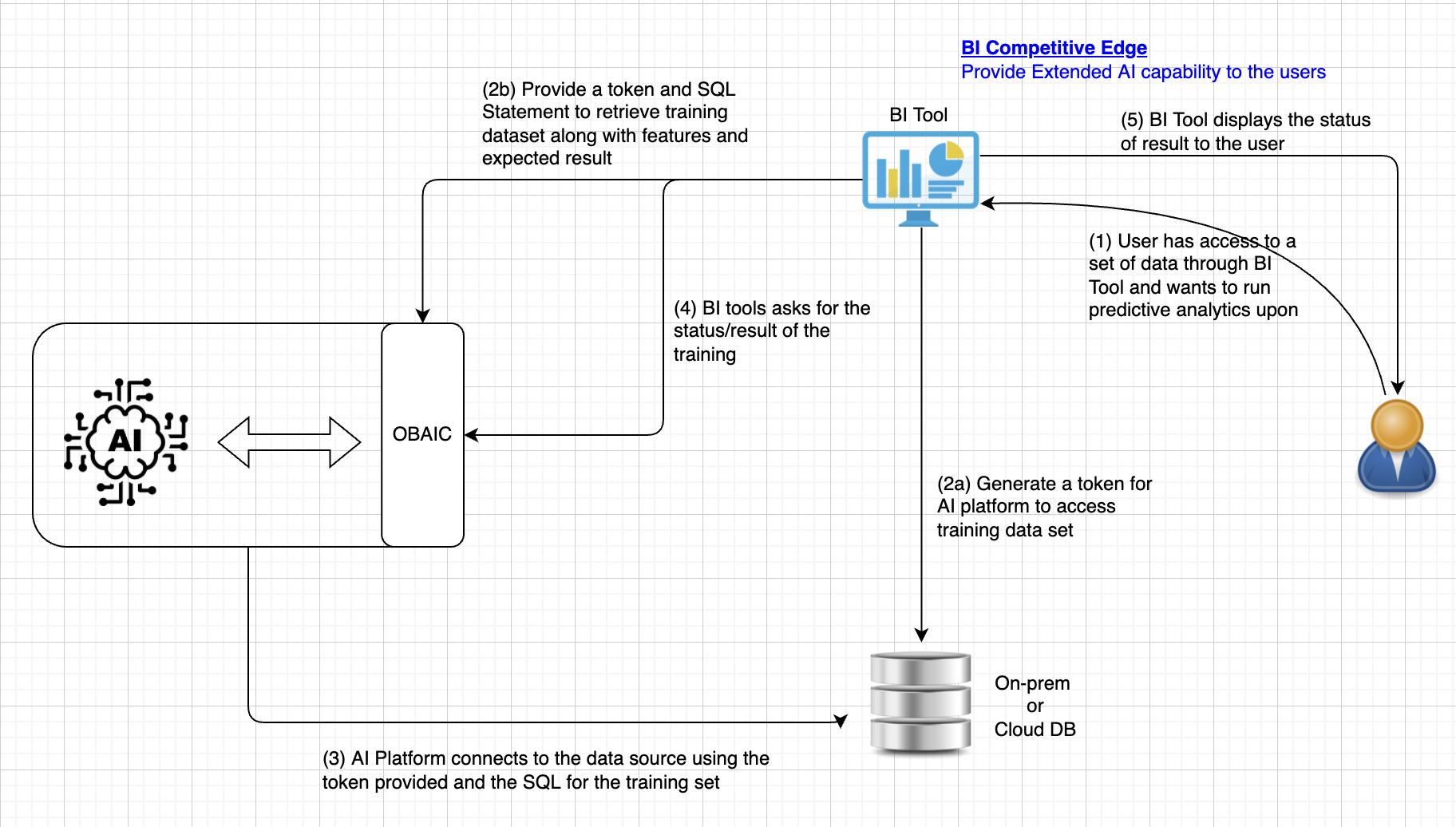...
- Open Business and Artificial Intelligence Connectivity (OBAIC) borrows the concept from Open Database Connectivity (ODBC), which is an interface that makes it possible for applications to access data from a variety of database management systems (DBMSs). The aim of OBAIC is to make it as the interface that makes it possible for define an interface allowing BI tools to access machine learning model models from a variety of AI platform platforms - “AI ODBC for BI”
- Through OBAIC, BI vendors can connect to any AI platform freely without concerning about the underlying implementation and how does the AI platform execute train the model or infer the result. It's just like what we used to have for database with ODBC that it's up to - the caller doesn't need to concern about how the database store the data and execute the query.
- The committee has decided this standard will only define the REST APIs protocol of how AI and BI communicates, initiated from BI to AIcommunicate. The design or the actual implementation of OBAIC, such as whether this should be Server VS Server-less VS Docker, will leave it up to the vendor to provide, or if this protocol grows to another open-sourced project to provide such implementation.
- There are 3 key aspects when designing this standard
- BI - what specific call do I need this standard to provide so that I can better leverage any underlying AI/ML frameworkplatform?
- AI - what should be the common denominator an AI framework platform should provide to support this standard?
- Data - Shall data be moved around in the communication between AI and BI (passed by value) or keep the data in the same location (passed by reference)?
Scope
- We understand that there are 2 key steps in machine learning - Model Training and Result Inference. In this first release of this protocol, we will only focus on inference. Training is provided here but it's subjected to more discussion.
High Level Protocol - Training
High Level Protocol - Training
- User analyzes data using BI Tools and found out that predictive analytics on those data set BI tool has some data on which predictive analytics would be valuable.
- BI tool, on behalf of the user, requests AI platform , through OBAIC, to train/prepare a model that accepts features of a certain type (numeric, categorical, text, etc.) by providing a token (with permission associated to the user requesting this) to allow access to accessing the training data with a SQL statement running against the datastore.
- BI tool polls for the status /result of the training. When or retrieve the training result. If the training is still in progress, the status will be returned. When training is completed, results and performance of the model will be returned.AI vendor provides predictions on data shared by BI vendor, again using an access token.
High Level Protocol - Inference
...
